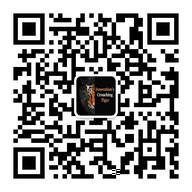Innovation and
|
|
Stars are falling
This March, the US Securities and Exchange Commission (SEC) sent shockwaves across the Pacific Ocean, shaking global capital markets. It adopted the Holding Foreign Companies Accountable Act passed by the Trump administration. As a result, the SEC now has the authority to demand US-listed companies to affirm that they are not owned or controlled by a governmental entity in a foreign jurisdiction.
on how toNamely, Chinese companies will have to name each board member affiliated with the Chinese Communist Party. If they fail to comply, The SEC could stop trading their securities.
Suddenly, dozens of Chinese enterprises are now seeking alternative capital markets. Options may include exchanges in Hong Kong, Singapore, or Shanghai. The STAR is rising Among those options, the Shanghai Stock Exchange STAR (Sci-Tech Innovation Board) is attracting attention, especially to high-tech enterprises. The STAR Market is China’s counterpart to NASDAQ. It has become a new board in the Shanghai Stock Exchange, established in June 2019. In a continued effort to increase the size and depth of its financial market, China launched the STAR Market to address these innovative industries’ growing needs. The STAR Market's listing rules support innovative companies that have impressive IPs but not enough revenues to obtain financing in traditional capital markets. As such, the STAR Market provides an additional and more structured exit option for investment in China. A crucial component in China’s innovation ecosystem The STAR Market's listing rules set out specific disclosure requirements for the innovation achievements and quality of IPs for companies seeking to list. In addition, these rules request an elaboration on how their IPs are essential to the companies’ competitive advantage. Because of its particular focus and purpose, the STAR has become an indispensable sector of China’s innovation ecosystem. As such, it can serve as a valuable window for deal makers who wish to observe the development and dynamics among various driving forces in China. The STAR is offering information otherwise unavailable or previously difficult to collect. Using the Star Chart as a map to navigate The book “Innovation’s Crouching Tiger” (ictiger2020.com) coaches readers on how to to conduct such observations.
Anyone seeking to observe China’s innovation ecosystem now may utilize the “Star Chart,” i.e., the STAR’s market statistics or reports. Observers now may investigate the market’s trade volume, total number, and composition of the listed companies, along with their financial performance, to get a sense of the innovation activity in China.
For example, in 2020, out of the 64 companies listed on the STAR board, 14 companies belonged to the health industry (21%); and 10 out of these 14 listed companies (71%) are in the medical device industry. This profile provides a bird’s-eye view to deal-makers seeking “hot zones” to invest in China. An excellent illustration of such analysis is available at “The STAR Market Report”. With the “Star Charts,” observers may also understand China’s innovation ecosystem’s current issues by investigating its regulatory activities. For example, the STAR’s listing rules cover, in length, the connection between companies’ IP portfolio and their competitiveness in the market. The listing rules scrutinize this aspect of competitiveness in response to a common but misleading practice where a Chinese company may claim to be an “innovative company” based on a sizable patent portfolio that does not have any genuine value. More insights into China’s innovation ecosystem? See a more detailed analysis of using the Star Chart at “The Debut of the STAR Market.” What are other observations available from this STAR Chart? What kind of business opportunities are available for global participants? Discover more insights into China’s IP ecosystem’s developments by visiting our blog at ICTiger2020.com or follow us on Facebook @ICTiger2020 for more related news stories. Feel free to contact Dr. Jili Chung at [email protected] or by scanning the following WeChat QR code.
0 Comments
Leave a Reply. |
Categories
All
|



 RSS Feed
RSS Feed
